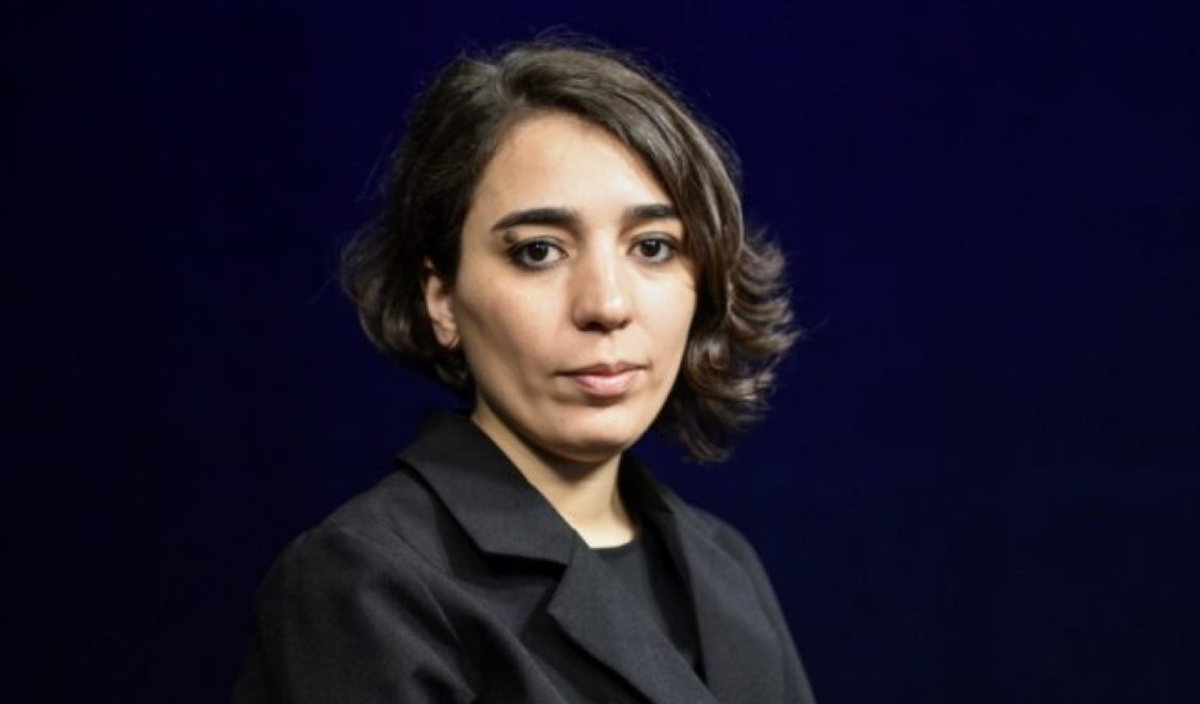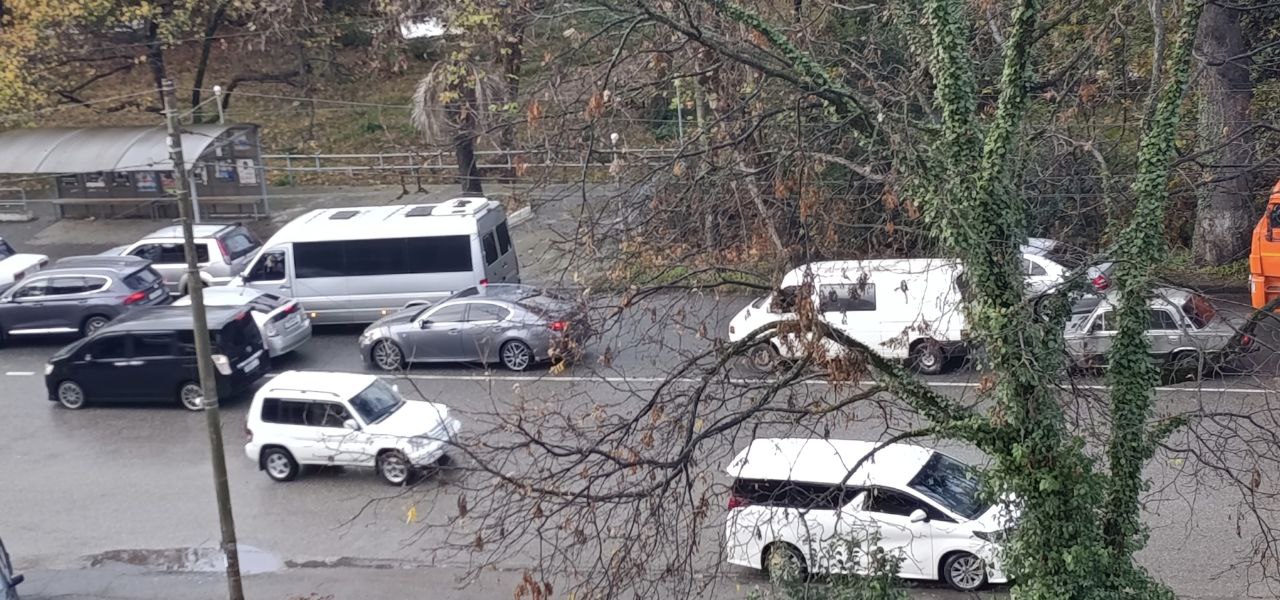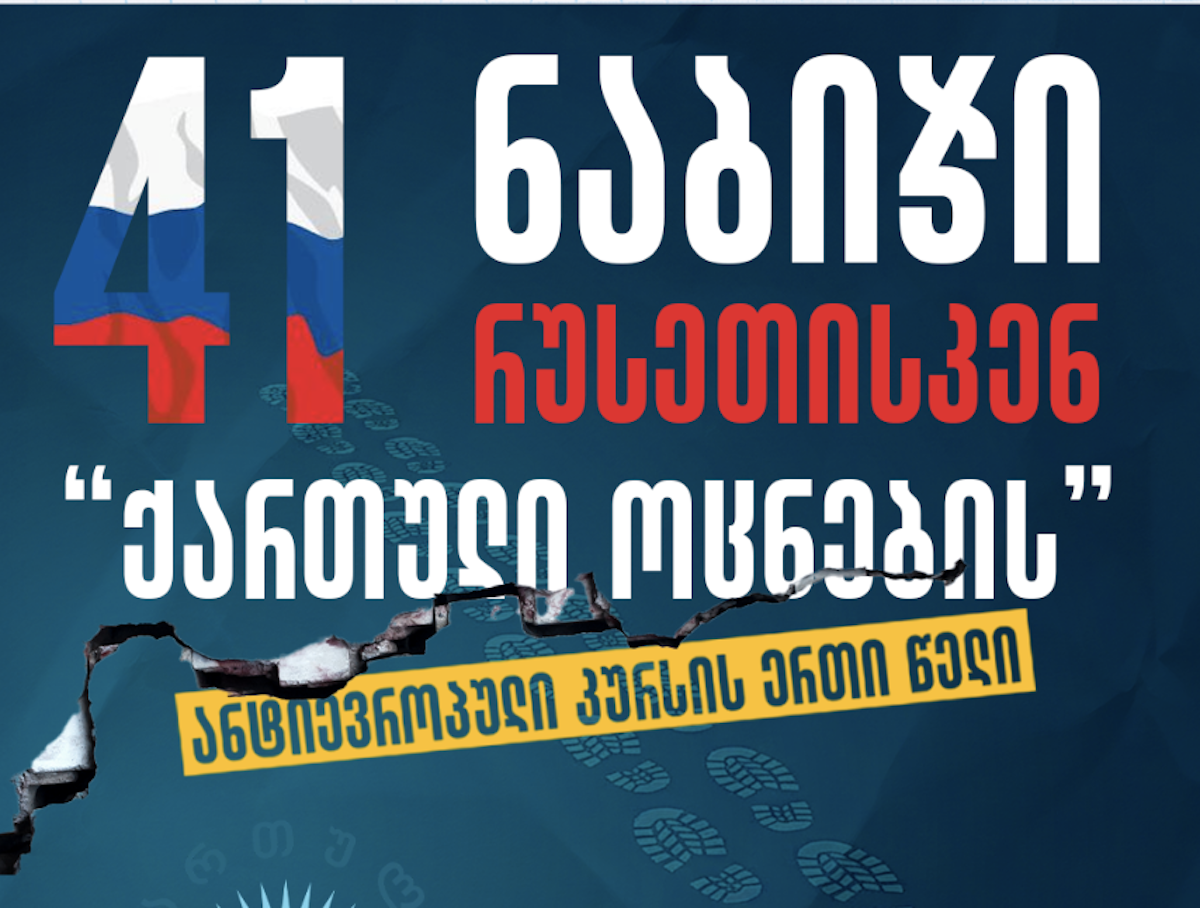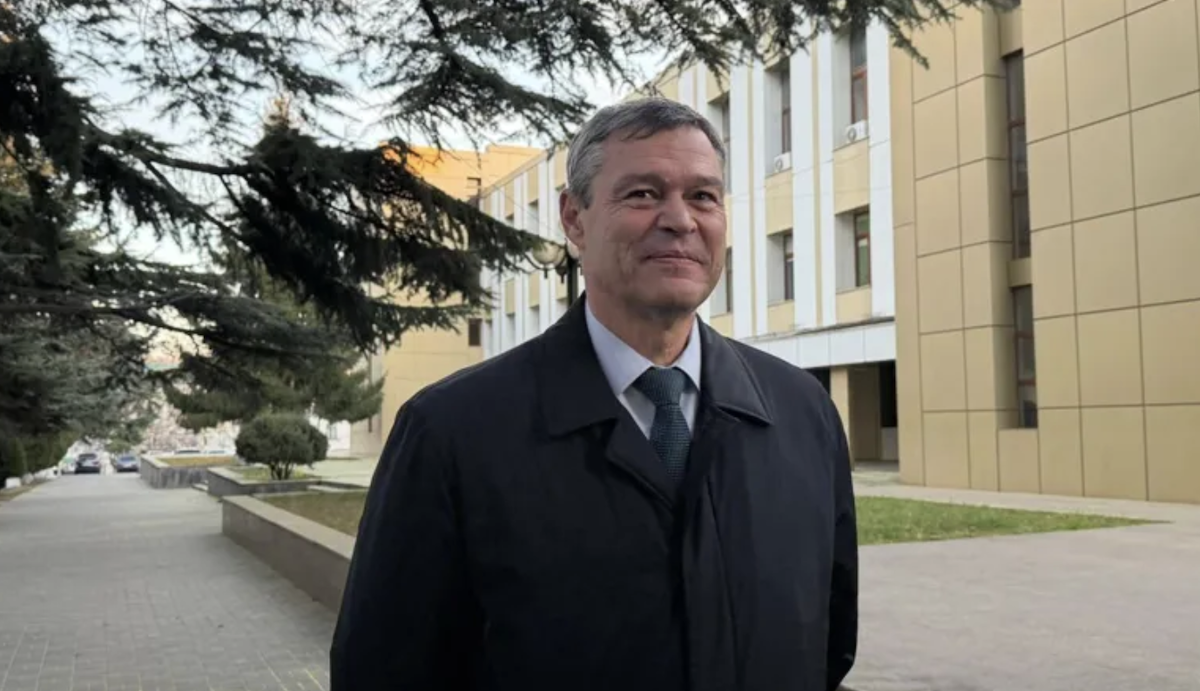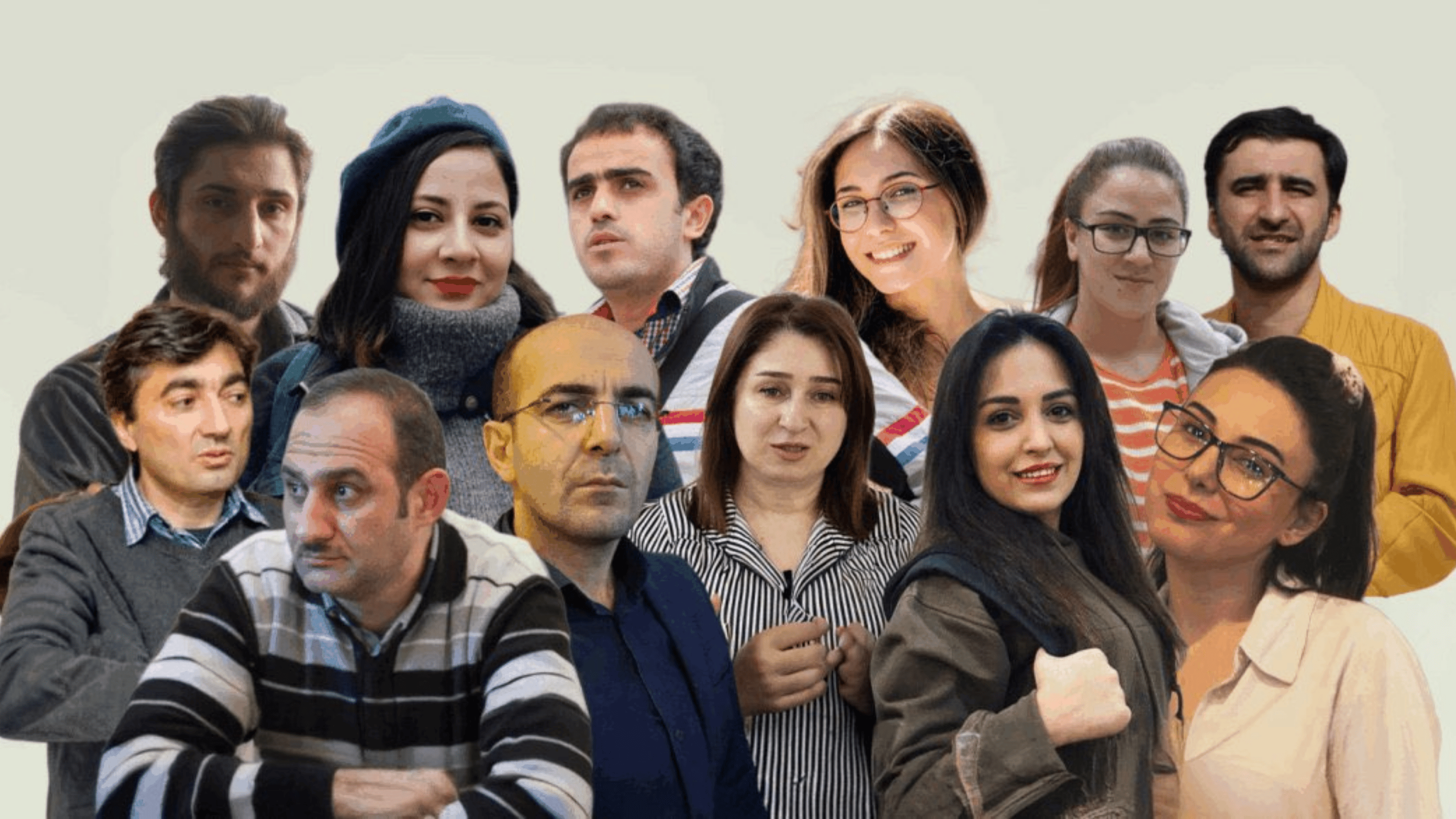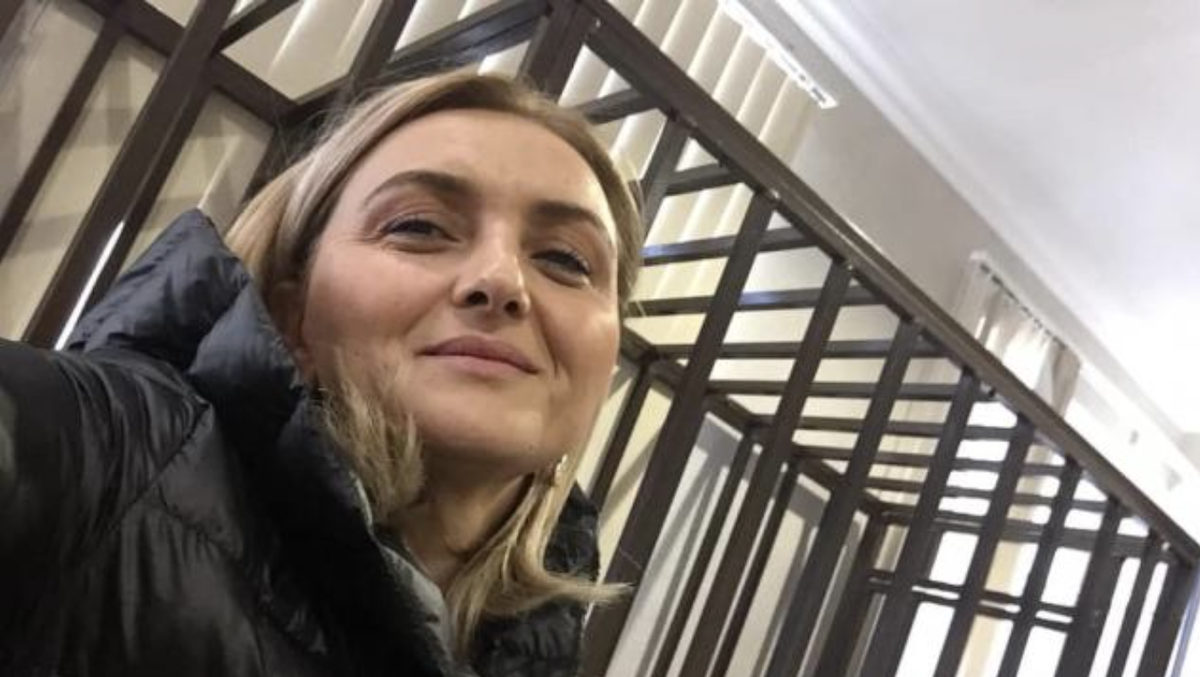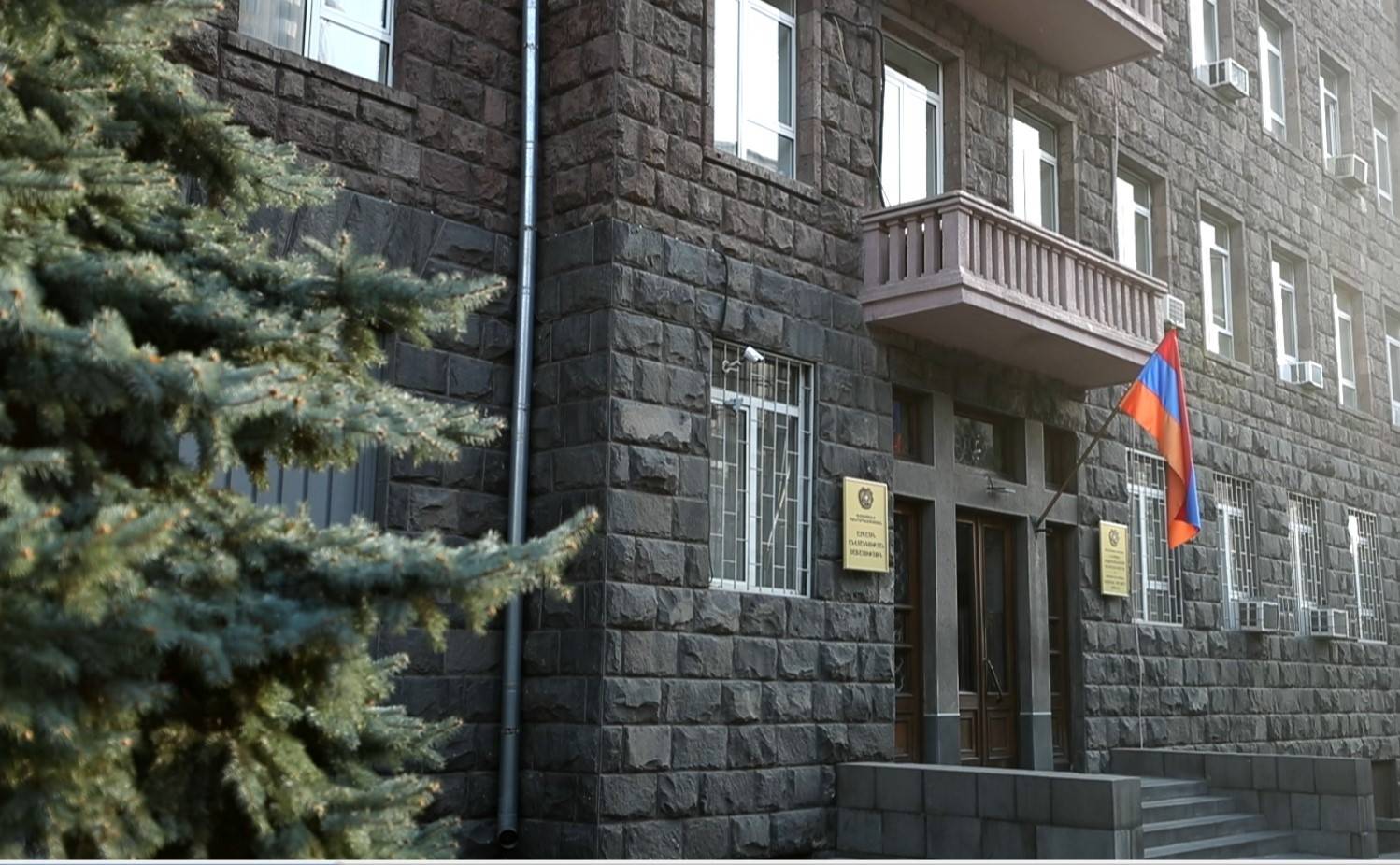Where to hang out with friends in Baku
It’s all about where and how to have fun together with peers if you are 17 and live in Azerbaijan. Age limits are necessary in order not to turn the article into a thesis. For the same reason, we’ll talk about sports some other time. We won’t discuss field entertainment either – let’s just stay within the city limits and boil down to the interests of the capital’s youth. How do they spend their spare time? How has their entertainment evolved?
‘Majeurka’
For a start, let’s pay tribute to ‘Majeurka’ (a gathering place for silver-spooners) which is a well-known locality among non-mainstreamers. It was a place (sometimes at Nasimi monument or in the vicinity of Nizami) where young people gathered with guitars. They sang songs, drank beer and fled from the police. In short, they were having fun.
In fact, it first appeared as early on as the end of the 50s, and it brought together beatniks and hipsters. That’s where its name originated from. In Soviet slang, the word ‘majeure’ (a silver-spooner) implied an offspring of the nomenclature worker, who was well-off and had access to banned jazz.
‘Majeurka’ survived harsh soviet times – Perestroyka (a political movement during the 1980’s), the democrats’ ruling, as well as new party bureaucrats, but failed to withstand the pressures of social media.
Internet-clubs
‘А С-up, В А-down, В А-down, down’. You push it and an additional menu pops up, where you can get 95 extra lives and this time surely kill Shao Kahn. Some still remember how to do ‘fatalities’ in Mortal Kombat.
Sega-salon is a kind of prototype of the Internet-club. They are small, basement premises, where there are TV sets with Sega game consoles connected to them.
Once you have 1 or 2 ‘Mammads’ (‘Mammad’ was the equivalent of 1,000 Manat in old currency, which was in circulation until 2006, or 20 kopeks in modern currency. The bills featured a portrait of Mammad Emin Rasulzadeh, the founder of the first republic, whose name has become a common one), you can play in Sega-salon; if not, you just stand nearby and give guidance. Girls never visited such places, because it was regarded as very indecent, and that’s probably because there were plenty of boys in the salons.
“There were a couple such salons in our mahla [district-ed.]. Mostly boys hung around there. As soon as one got an extra ‘Mammad’, we immediately rushed to spend it there after school.”
But there was one girl, I don’t remember her name, but I remember her playing as Sonya (one of the game characters) in the Mortal Kombat. So, we called her ‘Sonya’. Her father would come to the salon and chuck her out of there, screaming and shouting, and would take her home.”
I think she was 12 and had a younger brother, who was about 10 years old. He was ‘watching out for her’ while she was playing, just in case her father would show up. He patiently stood at the door for half an hour and if their father came, she would hide under the table and we would put chairs around it, so that he wouldn’t notice her.
She was a good gamer in general. Sonya is one of the strongest characters in the game. It was just hard to learn to play with the character, though she managed it.”
Internet-clubs were opened later on, at the end of the 1990s, early 2000’s. How many hours a day do you use Internet? Now imagine that there is no PC at home, and you have just a few hours a day for your Internet-related matters. Course work was written and online romantic relations struck up in these Internet-clubs. It was a time when a PC was about to go from being a luxury into a working tool, whereas the ability to type a text and ‘use the Internet’ was indicated in the CV in the ‘skills’ column.
In the ‘dial-up’ modem era, an hour in the Internet-club was a rather costly affair: 5 ‘Mammads’ (AZN 5,000 in old currency) in the city center; 3 ‘Mammads’ in the outskirts. 2 people usually shared 1 PC in order to economize on their expenses.
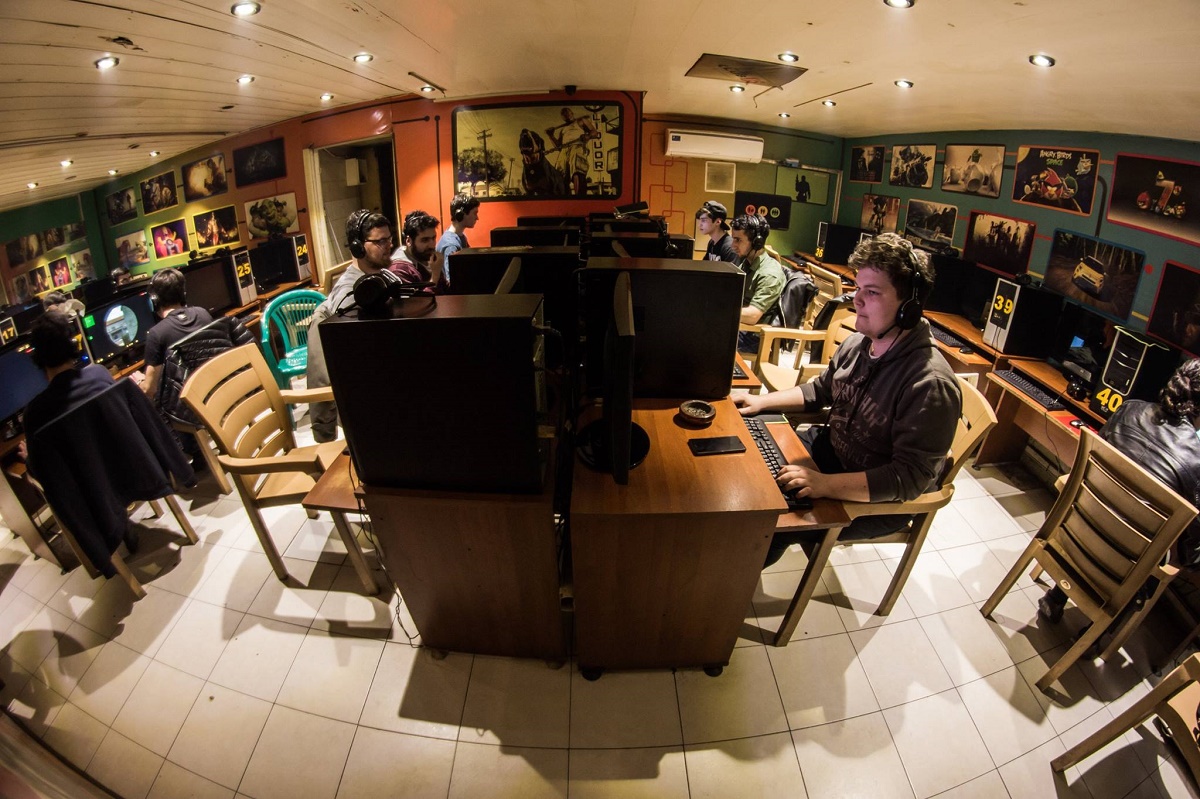
Internet clubs were an iconic social phenomenon of the late 1990s: at the time of its glory, some of them even turned out to be a gathering place for the sophisticated youth. But as soon as wireless Internet showed up, followed by all kinds of affordable Internet-devices, Internet clubs lost their importance and mostly turned into playgrounds for young gamers from the lower strata of society. Adults also drop in here sometimes if they need to quickly print out any documents.
Entertainment Centers
Back in the 1990s, there were few attractions and entertainment centers but all of them were well-known. For example, one could play slot machines at Magic World near the ‘Azerbaijan’ cinema, drive speed cars at ‘Marketing’ or go bowling at the Baku entertainment center.
‘Marketing’ spent a lot back then in order to convince Baku residents that races were splendid entertainment which was surely something worth trying. They used to advertise them on local TV channels.
“When I hear the word ‘Marketing’ , the engines automatically start buzzing in my ears. It’s from that old advertisement. It’s hard to imagine it now, but at that time advertisement was a new notion and each second ad became a meme or at least got stuck in one’s memory.”
Today, there are about 20 entertainment centers in Baku, offering a rather standard set of services: bowling, mat-carting and slot machines. However, none of them operate independently. They are usually located either in a shopping mall or they have a broader infrastructure: cafés, restaurants, spa-salons, fitness halls and shops.
Judging by this way of doing business it can be concluded that the entertainment industry itself doesn’t yield huge profit. There is obviously no mass demand for bowling, because the prices are too high for, let’s say, a group of students. There are also children of well-off parents, but they mostly prefer clubs and restaurants. As for the working class people and those who have families, their leisure time is another story.
Discos
“I went to a disco for the first time when I enrolled in the institute. It was in the early 2000s. My former classmate took me to a famous ‘Skylife’ club in Baku. It was believed at that time that popularity didn’t imply good reputation. Love affairs quickly started and ‘broke up’ there; youngsters smoked in the WC, and sometimes they even had sex there. Naturally, my parents would not have allowed me to go to such a place. I told them I was going to a nearby library to study, but instead I went to dance.”
Apart from the ‘Skylife’ club, there was also a popular disco in the Vatan Cinema building (it had the same name), as well as the ‘Eighth Wonder’, which was located further on, almost in the ‘periphery.’ Those discos were designed mostly for ‘middle class’ people. The entrance was free for young ladies, while the guys had to pay 2-4 ‘Mammads’.
“You could come around to those discos with a group of friends and just dance there. We, the youngsters of about 15-16, usually gathered there at 3 – 5 p.m. and stayed until 8-9 p.m. An absolutely different crowd gathered there later.”
Those discos looked as follows: a roomy, damp premises, sometimes a basement, with poor ventilation and popular hits.
Later, some elite discos were opened for the better-off public: ‘10.33’, ‘Tunnel’ etc.
The archaic Azerbaijani community viewed discos as the hotbeds of perversity, in general. As a rule, parents didn’t allow their children to go there. First of all, prostitutes really picked up clients there; secondly, the prudish young people often had to drink much so as to start dancing there. One way or another, ‘ordinary discos’ ceased to exist as a ‘species’ (they could be said to have degenerated into the clubs).
“I think discos failed to survive from an economic point of view. It’s unprofitable to work when people come to dance rather than to order drinks. Therefore, their format has been changed – a club has become a place of ‘sitting’ recreation. First you come, order something, pay for entrance, then go dancing. It was all much simpler earlier. Besides, we had no other choice as discos and cinema were the only means of entertainment.”
Clubs
There are numerous clubs in Baku – Enerji, Old City Club, Castle. As for the entertainment, they offer performances of show business celebrities, mostly Russian ones. World renowned DJs are invited here (‘world’ implying Russians, Ukrainians, Kazakhs).
The entrance fees here are rather high. The prices start from around USD 30 and reach USD 300. So, a scholarship will be hardly enough to visit such clubs. What’s left is pocket money given by wealthy parents or sponsorship by a rich friend.
There is ‘face control’ at the club entrance: specially trained security guards are closely watching, to ensure that women who look shabby and unpresentable men couldn’t get inside.
The young clubbers acutely realize their belonging to the elite and learn to play the hierarchic games at an early age. Female frequenters clearly know who should be kissed on both cheeks on meeting, and who should be just greeted. Therefore, the dancing community in a Baku club oftentimes don’t look like youth who are having fun: it’s impossible to kick back fully and, at the same time, maintain one’s status.
“I was in the Opera Sky and Pacifico. It was really boring, nobody was dancing, everyone was just sitting and staring at their cellphones. I went to the WC and found a crowd of women, each of them a fashion model. I wondered why they weren’t on the dance floor.”
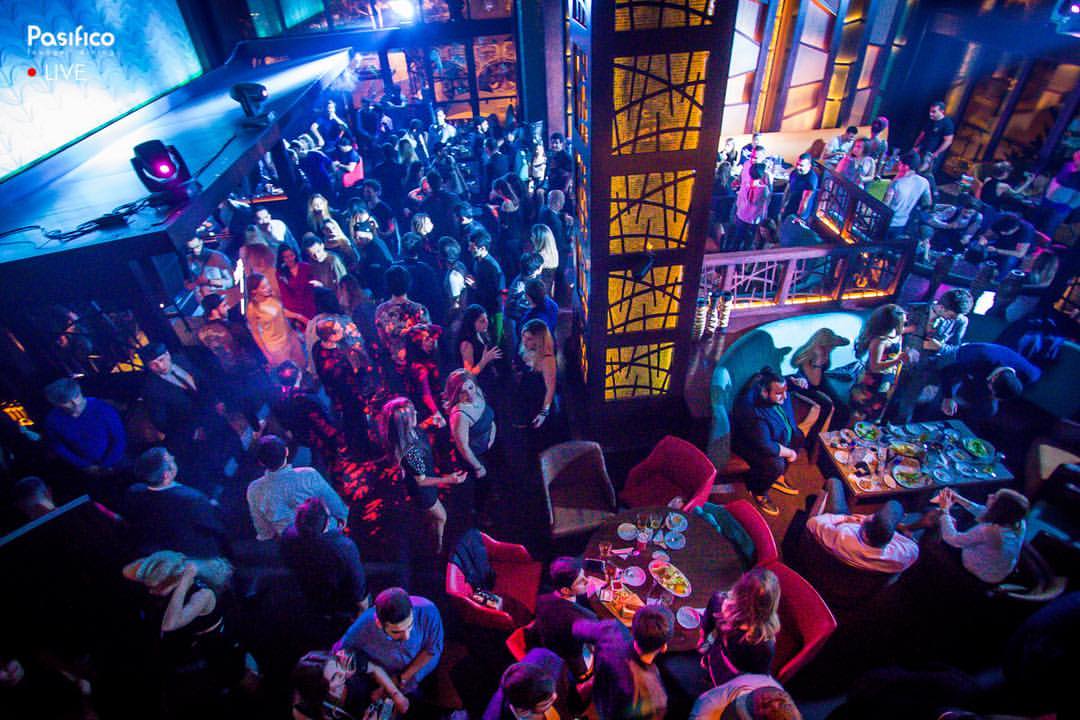
Karaoke
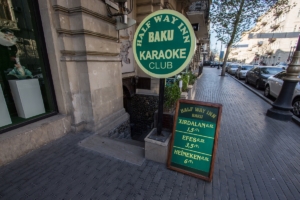
A lot of karaoke cafés appeared in the mid-2000s. Even in the street one would often hear another amateur singing either ‘Vladimirsky central’ by Mikhail Krug, or something from Lubov Uspenskaya’s repertoire. The prices varied according to location, but, as a rule, it wasn’t very expensive.
Although it’s less popular nowadays, there are still some people who enjoy singing out loud. The very ‘first localities’, like ‘Nelson’ in Semed Vurgun street and ‘Karaoke-Club’ in Khagani, have been preserved.
The repertoire has evolved with the emergence of accessible Internet: some songs in Azerbaijani and Turkish have appeared. Russian music still enjoys popularity, along with a standard set of popular world hits, as well as various pop-and-rock classics.
Anyone who has enough money for a couple of cocktails can come and sing in karaoke. The main thing is to have a desire to sing. And the atmosphere here is more ‘homelike’ than in clubs or restaurants.
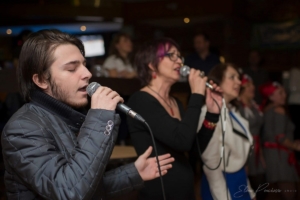
“There are two types of visitors: those who can and love singing come to demonstrate their ‘talent’, they can sing sober, whereas the second category of people don’t know how to sing, but they do it wholeheartedly, having no mercy on people around them, and they oftentimes do it under the influence of alcohol. It’s hard to give any other assessment to karaoke-clubs. Well, maybe the quality of audio equipment has improved and the song catalogs are almost unlimited – things that are not included in the program are available on the Internet.”
Cinema

Once popular ‘Araz’ and ‘Vatan’ cinema houses no longer functioned for their intended purpose in the post-soviet times: there was a restaurant in ‘Araz’, while ‘Vatan’ accommodated a disco club and later some shops and cafés. The renowned ‘Azerbaijan’ was the only functioning cinema house. It was the only place where all the releases of the 1990s-early 2000s were screened. All films were provided in modern Dolby Digital surround sound.
On a side note, those very abandoned cinema houses served as a prototype for mini-cinemas that have nowadays become so stylish.
“For example, in ‘Nizami’ cinema, it was possible to bring one’s own DVD film; a company would gather and chip in 2 Manats for renting the hall. I still remember how we watched the then-newly released fifth film about Harry Potter.
Later, specialized mini-cinemas appeared: those were small halls equipped with all-over-the wall screens, cozy sofas, where one could order some drinks and snacks.
There are 18 cinemas in Baku, and they are very popular, especially among the youth. The movie ‘assortment’ is not too rich: some 3D-novelties, a couple of locally produced comedies (which weren’t available some 5 years ago), and, as a rule, an animated film for kids.
Theatre
Theatre-goers are quite few in number nowadays. There is the Russian Drama Theatre for the Russian-speaking public. The performances there are mostly designed for the middle-aged audience.
“In 2000, my parents and I attended a much-talked-about play ‘Let’s meet at Torgovaya’. It was a performance imbued with a spirit of nostalgia, with simple humor. The elderly enjoyed the stories about emigrants, while the youth cheerfully laughed at the jokes about ‘gays’, but I didn’t find it funny.
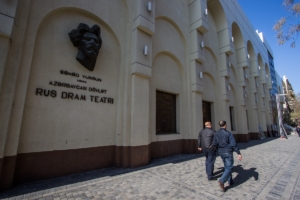
There is the Opera House and the Musical Comedy Theater for fans of the classics, as well as the Puppet Theatre and the Young Spectator’s Theatre for kids. As an alternative, there are a couple of youth theatres, that mostly hold out on ‘sheer enthusiasm’, working in rented apartments, producing the sceneries themselves and doing so without salaries.
Such theatres are attended by a new generation of progressive Azerbaijani youth, those who study English or Turkish, rather than Russian, as the second language, and who are oriented towards western culture.
Food as a part of recreation culture
At all times, there were catering facilities in Baku that reflected the public culture at every moment of history.
The first McDonald’s restaurant, opened in Baku in the Fountains Square, served as such place in 1999. At first, some cultural outings in evening wear were organized. ‘Going to McDonald’s’ implied ‘being in trend.’ Whereas now, it’s just one out of numerous fast-food facilities, where people go to have a snack, and it has almost lost its ‘cultural load’.
Portofino, Rhapsody, Pizza Inn, Pizza Hut – those are the localities, where one could ‘hang out’ and ‘have a bite’ in the 1990s-2000s.
“A pizza in the ‘Pizza Hut’ cost 3 ‘Shirvans’ (30,000 old Manats), while a scholarship was just 1,5 ‘Shirvans’. So, we couldn’t often go there on our own money.”
In the early 2000s, as the country was still recovering after the collapse of the Soviet Union and subsequent famine in the 1990s, the prices in cafés were at the ‘ceiling limit’ of what an average Baku resident could have spent. Therefore, ‘going out for pizza’ was a major event. The daunting cost of pizza was quite surmountable: 8 people would chip in for it and each would get a piece and an opportunity to join in civilization.

Later, the money and competition from oil made a miracle for the public catering industry: the prices dropped, an average Baku resident’s incomes increased, and even scholarships exceeded the cost of pizza by several times. Food was no longer ‘in deficit’, and people in the youth companies no longer suggested: ‘let’s go and get some food’, but rather ‘let’s go out for a beer’. The market was divided into niches: youth bars with cheap alcohol drinks; fast-food facilities for a snack; coffee houses for meeting; pubs for beer get-togethers.
To put it short, everything has become like elsewhere in the world, except for one thing: only 1 out of 10 Azerbaijanis will suggest to his/her friends to go bowling, visit the theater or cinema. The rest will prefer a feast as a habitual form of communication.
Intellectual games
A sports analogue of ‘What? Where? When?’, a televised game that was launched in the USSR in 1975, was first aired in 1989. The teams competing with each other in logic and erudition replaced a team of intellectuals who answered the viewers’ questions as part of the TV show. This particular ‘sport’ has widely spread out in Azerbaijan.
Initially they played in parks, libraries, empty classrooms and vocational schools. The young, the not-quite young and already middle-aged people, gather nowadays in pubs, in co-working centers, sometimes just on a bench in the park, clap their hands, loudly read about ‘Bernard Shaw’, whereas those who are unfamiliar with this phenomenon, pass by, giving curious looks at those strange people.
The popularity of ‘What? Where? When?’ hasn’t been diminished, not least because people rarely quit the movement. Those, who joined it as the pimple-faced, awkward youngsters, keep playing it even after they become the stout, mustached men.
Alongside a classic version of ‘What?Where?When?’, there are also some varieties, like: ‘Brain ring’ and ‘Svoya Igra’ (‘Your Own Game’). In addition, there are some new games that are swiftly gaining popularity.
There is also a ’Pub-quiz’, during which interested individuals, who gather in the pub for a glass of beer, solve the quizzes on popular culture-related themes-cinema, music, literature. Puzzles (‘quizzes’) of the club 42 (where ones solve puzzles and tackles interesting tasks). Since mid-2000s, there has been a wonderful game ‘Hamsa’, with its own clubs and tournaments, which is very popular in Azerbaijan and Central Asia.
“You can often hear people saying that there are very few smart young people nowadays, that the society is degrading, that there are fewer book-readers and thinkers, but I disagree with that. There are a lot of smart people, but they ‘dwell’ on the Internet and they are hard to be noticed and singled out in the real life separately. All of them need creative recreation and creativity, in general.”




Quest rooms
“3 Friends and I were chained to the wall by our legs. They explained to us that we were supposed to solve puzzles and only thus we would be able to get out of there. Then we were locked. So, we got in the ‘Saw’ escape room. And also, under the scenario, they were supposed to come out in horrible masks and frighten the players. I was pregnant at that time and so we did without it.”
Quest rooms have appeared just recently, they are in bulk and some new ones are opening regularly – Portal Games, Questomania, EuroGuest, Exit, Tala Escape, Evden qacish (Escape from home). It’s mostly a premises with several (two or more) rooms, with décor and scenery that correspond to the scenario. The participants (their number may range from 2 to 10) are offered to choose a game and pass through it. You are expected to solve some intellectual riddles, that are neither too hard nor too simple and that require attention and teamwork. Some quest rooms are relatively small and not much distinguished by the variety of decorations, while others are more ‘sophisticated’; all of them should create the illusion of being in some mysterious place and they require concentration.
The price for this pleasure amounts to AZN 10-15 per person, depending on how difficult the quest is.






Anti-café – a new way of recreation
Anti-café is one more novelty that has become extremely popular within a very short period of time. There are already several anti-cafés in the capital. You don’t have to order anything there; you just pay a symbolic price for time and you can sit on a sofa and have a cup of tea with biscuits as long as you wish.
‘Tik Talk’ is the first and the most popular anti-café in the city. There is also the ‘Second home’ anti-café, with a fluffy cat and as many as 2 floors. Once you enter it, you should take off your shoes and put on slippers. Indeed, you feel as if you are home – there is furniture with forged curved legs, a cage with a parrot and a warm carpet on the floor.
Due to its cozy atmosphere it’s very convenient to study here – students come here, celebrate their birthdays, arrange some surprises or organize small concerts.









Underground
In the 1990s-2000s, it was a rock concert where one could have a drink and listen to some good and loud music in an informal environment. Rock concerts were traditionally held in the culture centers.
However, this format started melting away by the end of the 2000s, because the audience dwindled in number. So, more convenient underground pubs have been offered as an alternative to the old culture centers without tables, but with comfortable red calico seats. They differ from the ordinary pubs by their markedly modest but original design (so to say, ‘with a spirit’); permanent ‘plug-in’ (there is always a mixer, sometimes a drum set); a small section of the premises is zoned for a stage; musicians always play in such places on weekends.
The key advantage of such places is that cheap beer is always available there. It’s mostly NZS, while in the past 3 years it has been Zhigulevskoye. A standard price for the latter makes AZN 1. This point is particularly important, since the youth do not have much money.
The majority of such facilities are located in the city center, along Bashir Safaroglu street and the one parallel to it. Among them are: Le Chateau, Old School, 1984, Yeralti, and a couple of others.





To sum up, the diversity of recreational places has increased only in the past few years, and a notorious crisis hasn’t changed things much. People have become more creative so as to offer both an inexpensive and temptingly interesting service.
However, ‘oh, there is nowhere to go’ is still a pervasive theme of conversation. It can be partly explained by a chronic discontent with life, commonly found in many residents of the capital, and partly by an oppressive monotony of some of the entertainment industry spheres. Thus, we can conclude that despite the development of this sphere in the city, the supply still can’t keep up with the demand: people want better service, greater price ranges and more diversity.










